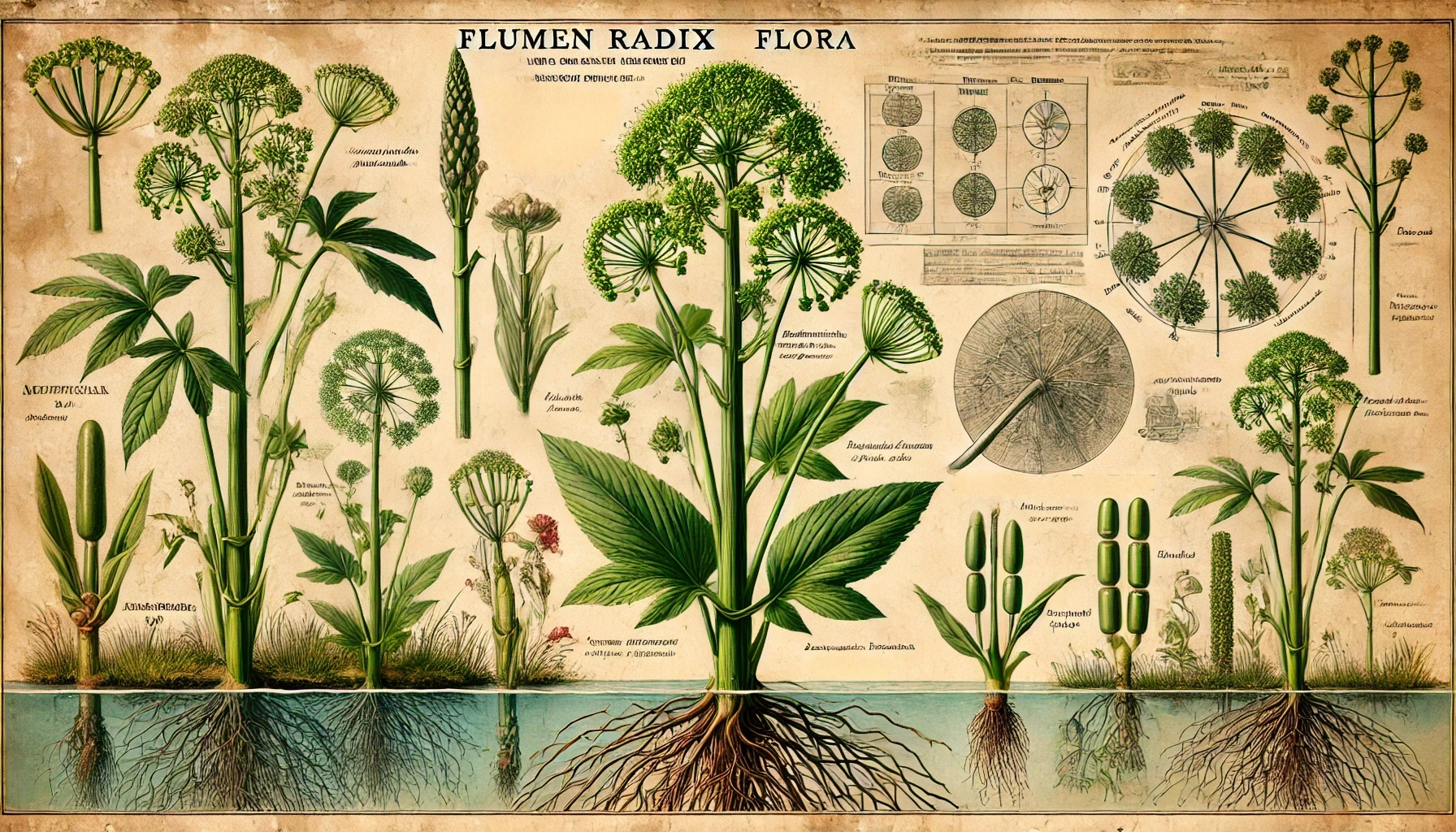Visual Description
The Floodroot Flower is a striking plant of fluid beauty. Rising on slender, reed-like stalks, it bears broad, brilliant green petals that shimmer faintly in sunlight, often catching the eye before the rest of the plant is noticed. Its roots extend down into riverbanks and floodwaters, with delicate offshoot tendrils floating along the surface, rippling gently with the current.
From a distance, a cluster of them looks like a chorus of green fire rising from the water—quiet, glowing, and alive.
Habitat and Growth
This plant flourishes in floodplains, swamp channels, and river edges, especially in places where the water shifts with the seasons. Its roots are specially adapted to partial submersion, anchoring into soft mud and stretching outward into shallows where its offshoots filter the water.
The Floodroot Flower reproduces through buoyant seed pods, which drift along streams and eddies until they lodge in suitable ground. Entire colonies often trace the path of the same river bend, blooming in mirrored arcs as if echoing the shape of the current.
Alchemical Use and Preparation
Aligned with the Nature Connection aspect, the petals of the Floodroot Flower are dried or gently steeped to create infusions that enhance one's sensitivity to natural rhythms and surroundings. The potion grants a sensation of flow, allowing the drinker to move in harmony with their environment—whether navigating dense terrain, following animal trails, or reading the wind and river with unusual clarity.
Used sparingly, it is favored by scouts, herbalists, and traveling performers who rely on the subtle cues of the world around them.
Harvesting is best done during high tide, rain-swollen rivers, or during flood surge, when the plant's connection to the water is at its peak. Once harvested, the petals should be stored submerged in pure, cool water to preserve their properties.
Warnings and Curiosities
While the petals are gentle in effect, the roots contain a deeper potency. Ingesting the root essence can overwhelm the senses, causing feelings of disembodiment, breathlessness, or even simulated drowning. Some rare rituals use this deliberately—to evoke surrender or force a rebirth-like vision—but these are typically overseen by trained naturebound practitioners.
The Streamside Sunflower is a common lookalike, sharing the flower's height and color but lacking its submerged base and surface tendrils.
Historical Notes and Folklore
The Floodroot Flower is regarded as a symbol of purity, flow, and renewal. In riverside communities, it is sometimes planted near water sources to mark a safe drinking spot. Children are taught to watch for its petals before filling their cups.
In times of grief or hardship, small bundles of petals are wrapped in linen and floated downstream—to carry sorrow away and clear space for healing. These offerings are never spoken of again once released.
Some forest dwellers claim that if you sit quietly in a patch of Floodroot during the last light of day, you can hear the water speaking—not in words, but in a rhythm your heart will remember long after you've left the river.
“You can’t force water to hold you. You have to learn to float.”
— Ellaswen Tairil, Warden
The Drift Offering
In riverside communities, it’s tradition to release a small bundle of dried Floodroot petals downstream at dusk after a difficult loss or personal failure. These bundles are often bound in bark or linen and left unmarked. Locals believe the river carries the burden away—but only if you do not watch it go.
Journal Fragment – Ellaswen Tairil
The river was swollen but calm. Sat among the roots, petals open to the sky. Shared a sip with the youngling—first time she ever listened to silence and heard something back. She cried and didn’t know why.
That’s how it begins, sometimes.
The Root That Drowned
A wandering hedge-practitioner once tried distilling the Floodroot’s taproot into a concentrated draught. He claimed it gave visions of the river’s memory and insight into the “deep-flow.” After two doses, he stopped speaking entirely. For weeks, he walked barefoot along riverbanks, staring into currents. Eventually, he vanished during flood season. Only his staff was found—half-buried in a silted bend, wrapped in flowering vines.
“It’s a plant. It filters mud. The idea that it whispers secrets to those who bathe in it is... poetic, I’ll grant. But I prefer my water unmagical and my feet dry.”
— Alchemist Harven Drel


Comments